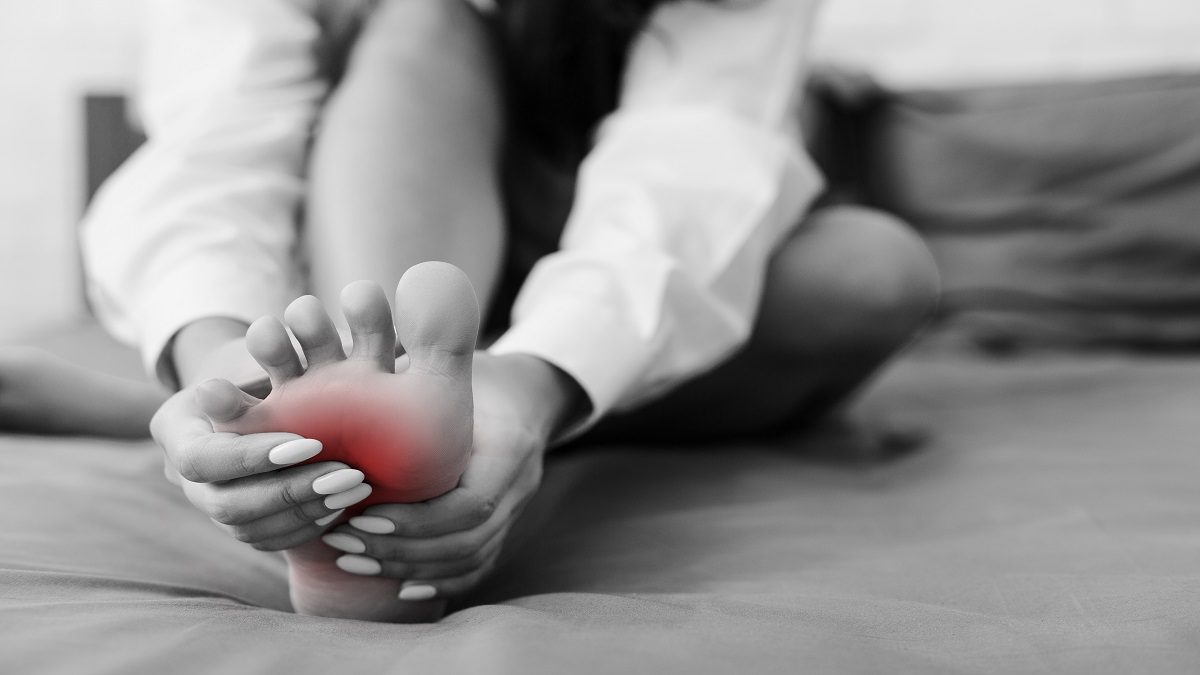What is metatarsalgia?
Metatarsalgia is a condition in which the ball portion of the foot becomes inflamed and painful (metatarsal foot pain).
Activities like jumping and running can lead to metatarsalgia, or it can be caused by wearing shoes that do not fit correctly. Other factors can lead to the condition as well.
Metatarsalgia is usually not a serious condition, but it can cause problems for people who like to be active. Many times, simple treatments like rest and ice can help relieve the symptoms of metatarsalgia. However, to prevent the problem from coming back, wearing the proper shoes and adding arch supports or insoles to absorb shock may be all that is needed.
Metatarsalgia risks
Factors that increase the risk for metatarsalgia development include:
- Participation in certain sports. Metatarsalgia happens more often in people who participate in high-impact sports. These include activities like baseball, basketball, soccer, and football. Metatarsalgia also is more common in runners and sports that involve jumping and running. Activities that do not put pressure on the ball of the foot, like cycling and swimming, are not as likely to cause metatarsalgia.
- Wearing high heels or footwear that does not fit. Shoes with elevated heels transfer body weight foreword onto the ball of the foot. Footwear that is too tight can put pressure on the toes. Wearing shoes that do not contain padding or are not padded in the right places can also increase metatarsalgia risks.
- Being obese or overweight. Extra body weight adds more stress to the metatarsals, leading to metatarsalgia.
- Having other foot disorders. Unusual foot shapes, like high arches, extra-long metatarsals, or having an unusually long second toe can lead to metatarsalgia. Problems like arthritis, gout, and hammertoe may also contribute to the condition by changing how a person walks and distributes the weight in their feet.
- Having rheumatoid arthritis or gout. These are inflammatory arthritic diseases that make the feet more susceptible to metatarsalgia.
Causes of metatarsalgia
Although most of the time, one single condition or factor is responsible for metatarsalgia, typically, it is due to a combination of contributing factors, including:
- Intense activity or training. Runners are at increased risk of developing metatarsalgia. This is mainly because the front part of the foot absorbs a great deal of force with running. Participation in any sport that involves high-impact increases the risk of metatarsalgia, and this is especially true when an athlete’s shoes are worn out or do not fit properly.
- Certain foot shapes. A high arch exerts more stress onto the metatarsals. Also, when a person’s second toe is longer than their big toe, more weight is shifted onto the head of the second metatarsal head. This can lead to metatarsalgia.
- Foot deformities. Wearing shoes that are too tight or too short or wearing high-heeled shoes can cause foot deformities. Hammertoe can cause metatarsalgia, as can bunions. Hammertoe is characterized by the curling downward of a toe, and a bunion is a painful bump at the base of the big toe.
- Excess body weight. Most of the body’s weight is transferred to the forefoot during movement. This means that excess weight puts more pressure on the metatarsals of the foot, causing metatarsalgia.
- Improperly fitting footwear. Footwear that is narrow in the front and crowds the toes, high-heeled shoes or sandals which transfer the body’s weight onto the metatarsals, or athletic shoes without adequate support can add to or cause metatarsalgia.
- Stress fractures. Small fractures in the bones of the toes can cause discomfort, changing the way a person walks. This can lead to metatarsalgia.
- Morton’s neuroma. This is a non-malignant fibrous tissue growth surrounding a nerve. It most often occurs between the bones of the third and fourth toes, causing pain and changing the way the person bears weight. This condition stresses the metatarsals and can lead to metatarsalgia.
Click Here to read about Treatment.
















Leave a Reply
You must be logged in to post a comment.